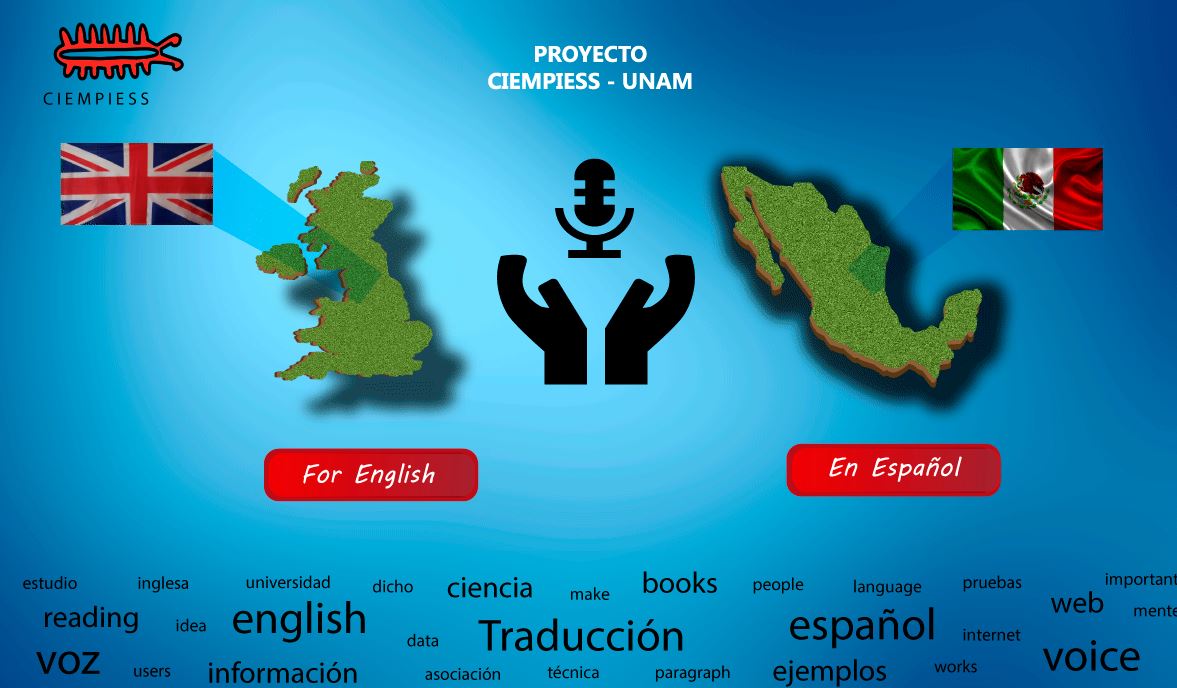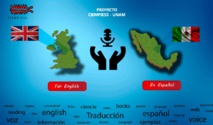Researchers from the Voice Processing Laboratory (LPV), of Faculty of Engineering, of the National Autonomous University of Mexico (UNMA), developed an oral corpus (voice recording database) to the automatic recognition of the voice in oral Spanish in Mexico, the first of this kind available to the general public for free.
The corpus named Mexican Spanish Corpus for Research, of the Postgraduate of Electronic Engineering and Social Service (CIEMPIESS) is a tool used in Linguistics and language studies, as well as in the area of signal processing, to order-execution systems trainings by voice. An example is a system would manipulate limbs prosthesis by voice or to turn on and off lights on a building, by others software applications.
Professor Carlos Daniel Hernández Mena is one of the developers of CIEMPIESS, who explains that systems for voice recognition designed for the English language were used for the creation of the LPV tool, developed by other universities and adapted afterwards to the Spanish spoken in the centre of Mexico.
Thousands of voice recordings
Over two years, the corpus created in the LVP has gather 16,717 voice recordings (around 17 hours in total), without noise, background music, or foreign accent, obtained from 40 hours of recordings from the Radio-IUS, Internet station of the Law Faculty of the UNAM. The audio of the Radio-IUS had originally a quality of 44.1 kilohertz and 192 kilobits per second, which was later descended to 16 kilohertz and 16 bits each sample, which allows a slightly superior quality compared to the quality of a telephone.
The CIEMPIESS counts on a dictionary of pronunciation, that is to say, a list of all the words, each of them divided into phonemes. For this, researchers used the phonetic repertoire of the Mexican Spanish that consists of 17 consonantal phonemes and 5 vocalic phonemes. To achieve this, Hernández Mena developed an automatic phonetizer, a programme that uses the written words and deduces its phonetic transcription.
The specialists of the LPV of the UNAM adds that if the distinguishing features of the voice of (at least) 50 speakers, men and women, are gathered together, a more general model can be created to recognise a wide range of people different to the original 50 people (provided that they speak the same dialect). These can be very advantageous, for example, for home automation.
Más información
The corpus named Mexican Spanish Corpus for Research, of the Postgraduate of Electronic Engineering and Social Service (CIEMPIESS) is a tool used in Linguistics and language studies, as well as in the area of signal processing, to order-execution systems trainings by voice. An example is a system would manipulate limbs prosthesis by voice or to turn on and off lights on a building, by others software applications.
Professor Carlos Daniel Hernández Mena is one of the developers of CIEMPIESS, who explains that systems for voice recognition designed for the English language were used for the creation of the LPV tool, developed by other universities and adapted afterwards to the Spanish spoken in the centre of Mexico.
Thousands of voice recordings
Over two years, the corpus created in the LVP has gather 16,717 voice recordings (around 17 hours in total), without noise, background music, or foreign accent, obtained from 40 hours of recordings from the Radio-IUS, Internet station of the Law Faculty of the UNAM. The audio of the Radio-IUS had originally a quality of 44.1 kilohertz and 192 kilobits per second, which was later descended to 16 kilohertz and 16 bits each sample, which allows a slightly superior quality compared to the quality of a telephone.
The CIEMPIESS counts on a dictionary of pronunciation, that is to say, a list of all the words, each of them divided into phonemes. For this, researchers used the phonetic repertoire of the Mexican Spanish that consists of 17 consonantal phonemes and 5 vocalic phonemes. To achieve this, Hernández Mena developed an automatic phonetizer, a programme that uses the written words and deduces its phonetic transcription.
The specialists of the LPV of the UNAM adds that if the distinguishing features of the voice of (at least) 50 speakers, men and women, are gathered together, a more general model can be created to recognise a wide range of people different to the original 50 people (provided that they speak the same dialect). These can be very advantageous, for example, for home automation.
Más información



 English
English



